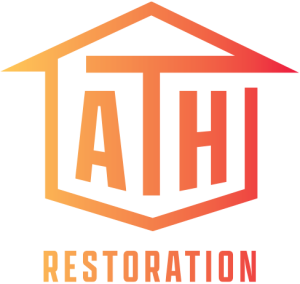A sewage backup is bad news for you and your property. It poses a severe health risk, considered a Cat 3 water damage emergency. But there’s good news. You can take steps at home to protect your plumbing system and help prevent clogs.
What Causes a Sewage Backup?
Here are two major causes:
- a clogged sewage pipe in your home
- a blocked pipe in the city’s sewage network
We also know of tree roots breaking pipes and causing blockages. Sometimes, heavy rainfall can overburden the city’s sewer lines. When a sewer line cannot handle extra demands, water flows into connected lines, which puts your property at risk.
How Do I Identify the Source of the Backup?
It can be a complicated diagnosis. But if you notice one toilet or sink failing to drain correctly, then the backup is likely caused by a clogged sewage pipe on your property.
However, if you notice that all your toilets, sinks, and baths are not draining properly, or at all, then it’s more likely coming from the city’s sewage line since it connects all of your drains.
You’ll need a professional assessment, especially if you are working with an insurance company.
What are the Warning Signs of a Sewage Backup?
Sewer Smell Coming from the Drains
If you notice sewage-like odors coming from a drain, or if your home smells like sewage from an unidentified source, there’s a strong possibility that you have a sewage backup.
Bubbling Toilets or Drains
You may notice air bubbles coming up from the toilet or drains while they are in use. This is probably because wastewater is not flowing through your plumbing system as it should.
Slow Draining Water
When wastewater cannot pass through the pipes freely, the kitchen sink, laundry sink, or other plumbing systems may drain water slower than usual. This problem usually occurs at the lowest levels of your home first. Left unresolved, the backup creeps up the sewer line.
Sewage Coming from a Cleanout Pipe
The cleanout pipe is a capped pipe that provides direct access to the sewage line outside your home. Clogged wastewater gets pushed out through the cleanout pipe. If you notice sewage water in your yard, you have a backup.
How Can I prevent A Sewage Backup?
You can’t control what happens to your city’s pipes, especially while your away from home. But you can take preventive measures to help minimize the likelihood of a sewage backup from your household pipes.
1. Maintain Your Sewer Lateral
The sewer lateral is a pipe that connects your property to the city’s sewer. Many homeowners don’t realize that it is your responsibility to keep this pipe in good working order. If your lateral is cracked or broken, groundwater can seep in, causing a backup.
Tree roots can damage older pipes constructed of clay or other materials. Today’s pipes are made of a plastic that tree roots cannot penetrate. Consider replacing an older lateral with an updated design.
2. Never Pour Oils, Fats, and Other Cooking Materials Down Your Drain
Fats, grease, and cooking oils don’t break down. They can solidify in your pipes and cause a blockage.
3. Install Drain Filters
An inexpensive but effective preventative measure is drain filters. They fit over the drains of your sinks, bathtub, and shower to help prevent solid matter from clogging your pipes. They are also ideal for laundry tubs to block soggy lint and other debris entering drain lines from the washing machine.
4. Recycle or Dispose of Paper Products
Never flush diapers, paper towels, feminine hygiene products, flushable wipes (most shouldn’t be flushed), or other materials that are not biodegradable. These products clog your pipes, leading to a sewage backup.
5. Remove Hair from Bathroom Sinks, Tubs, and Showers After Use
Catch loose hair before it goes down the drain. There are many hair clog prevention gadgets on the market to help make this job more manageable.
6. Use Enzyme, Rather Than Chemical, Drain Cleaners
Even the most attentive homeowners experience clogged drains and turn to chemical drain cleaners. You may not realize the potential damage these chemicals can do to your plumbing system. Always use an enzyme-based drain cleaner. They do the job just as effectively as chemicals, and they are environmentally friendly.
Have You Suffered A Sewage Backup?
Call a plumber if you’re seeing signs of a sewage backup you don’t know how to resolve. But if a backup already happened, get in touch right away. The trauma of a sewage overflow and flood damage is disgusting and alarming. But we’ll fix the problem, and restore your home to a safe, healthy environment.
Arizona Total Home Restoration provides professional sewage cleanup to include an evaluation of safety and health concerns, identifying the source of the sewage backup, water damage cleanup (plus disinfect and deodorize), air quality testing, and reconstruction as needed.
